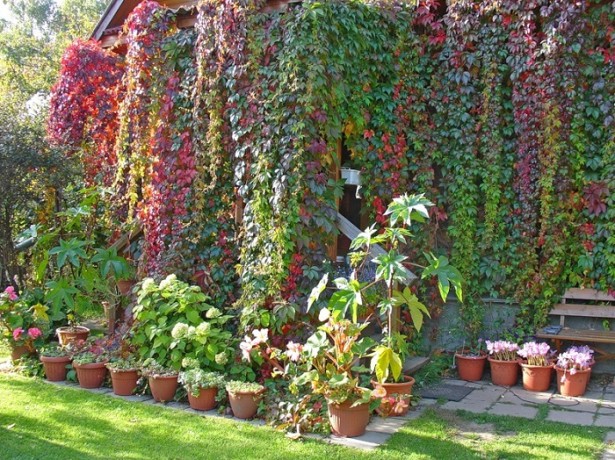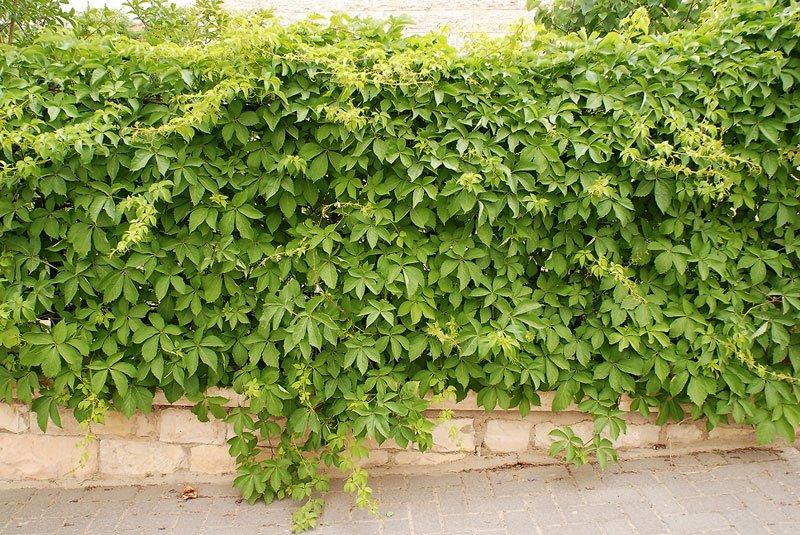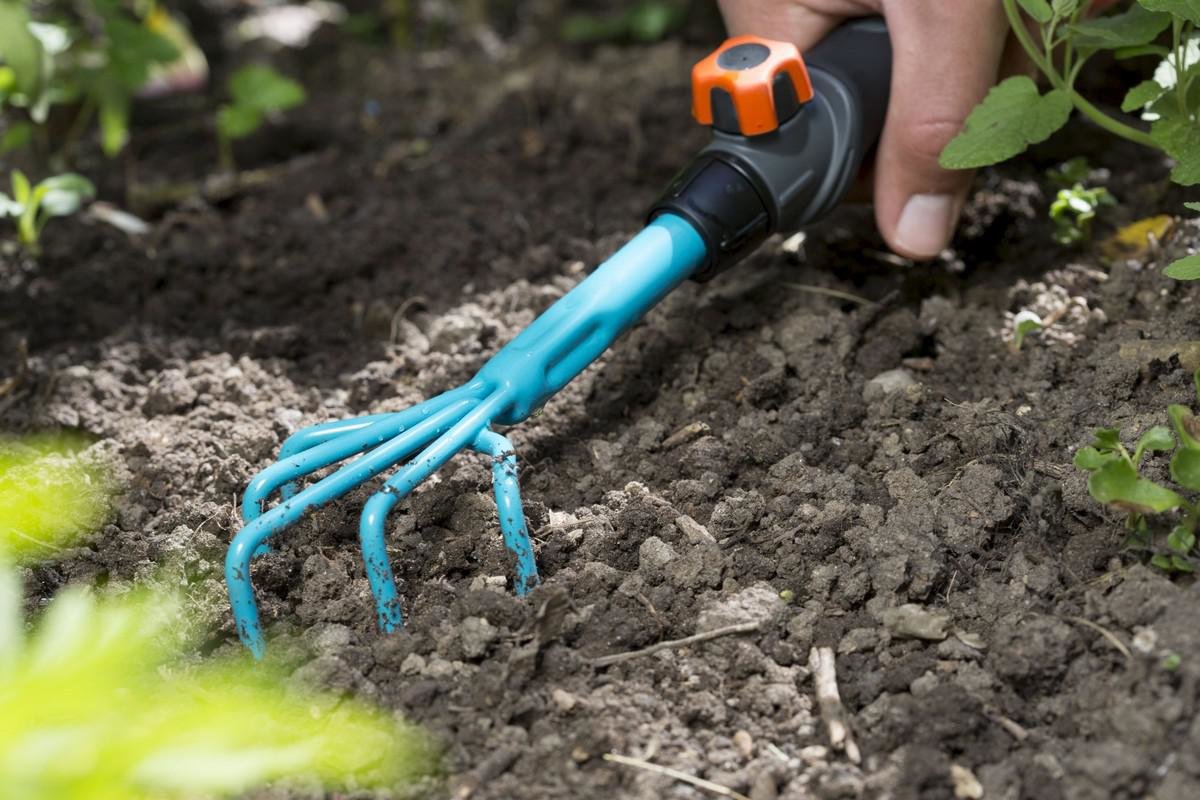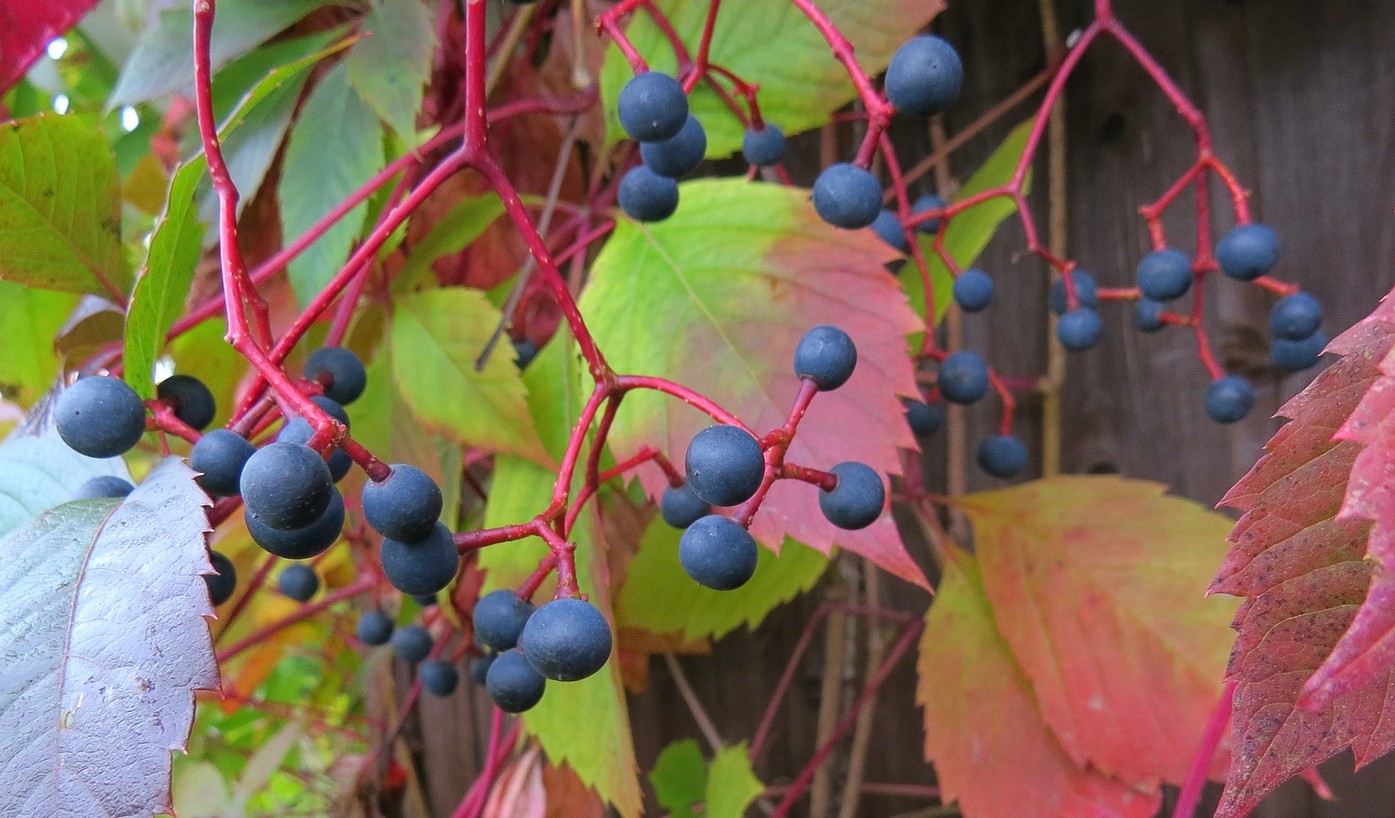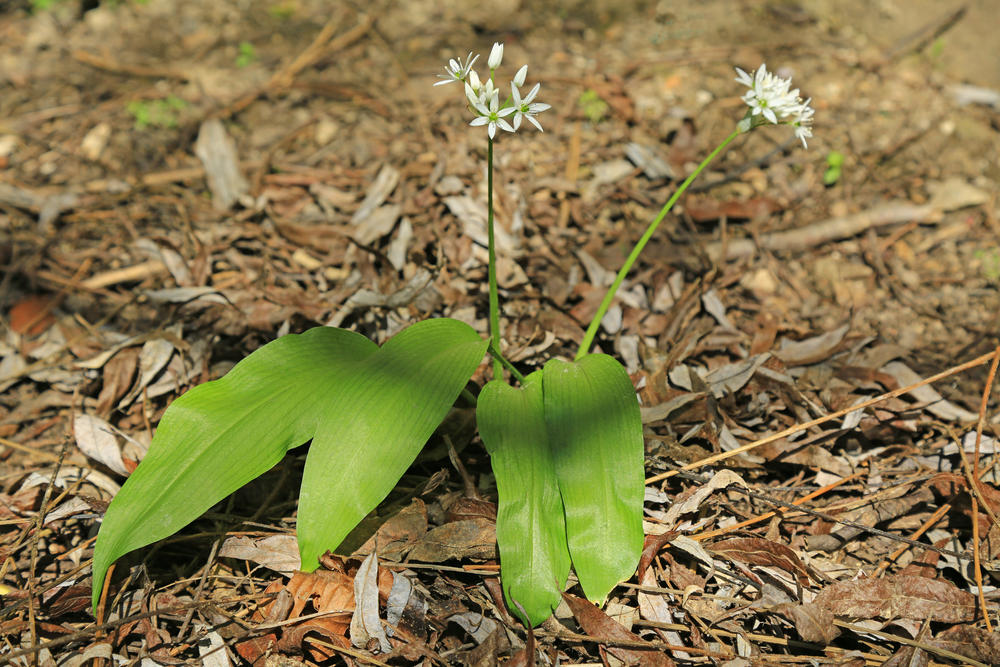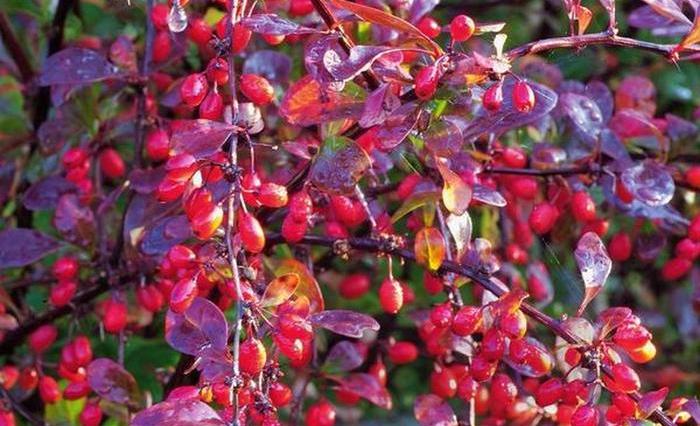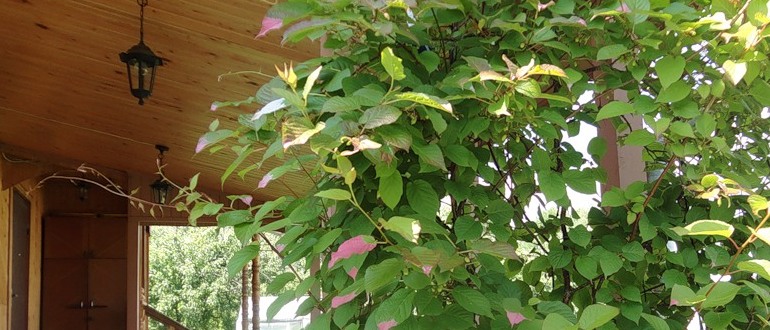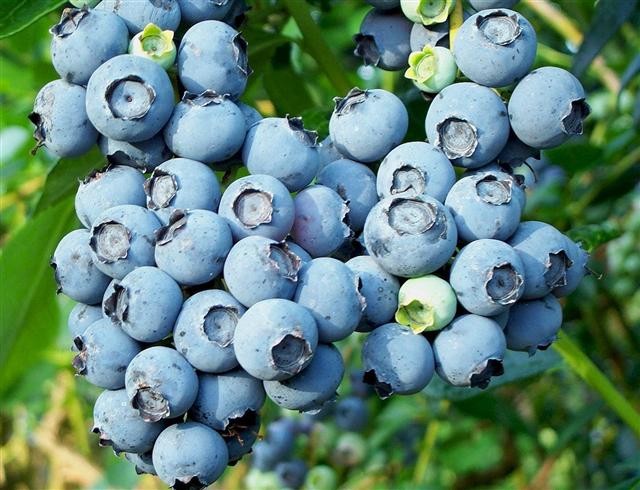Content:
Maiden (wild) grapes belong to the decorative lianas of the grape family. It is sometimes also called virgin. In landscape design, liana is most often used for vertical gardening of buildings, since the tenacious antennae independently find a place where they can attach. As it grows, it covers the wall with a beautiful carpet of leaves with several lobes on long petioles. In the fall, the foliage turns purple and the Maiden Grape looks particularly impressive.
Features of cultivation of wild grapes
The main difference between wild grapes and cultivated varieties is its dioeciousness. Both male and female flowers can be present on the same plant. On cultivated varieties, bisexual inflorescences are formed. The male and female plants of the Maiden Grape differ in the shape and size of the leaves.
Edible grapes are grown for their sweet juicy berries. Saplings are planted near the trellis. As it grows, the vine wraps around the vertical support with its antennae. This method of growing allows the plant to receive the maximum amount of sunlight needed to ripen the crop. Maiden grapes have a purely decorative purpose.
This vine is fast growing and requires little or no maintenance. In the fall, inedible berries ripen on the branches. Grapes not only taste bad but are also considered poisonous. The plant has excellent resistance to fungal diseases and pests, does not require shelter for the winter. Wild grapes are propagated by cuttings, layering, offspring and seeds.
Landing places
Planting sites for the Maiden Grape are determined by its properties. It is not planted in an open place as an independent plant, but is used, especially for decorating something. Wild grapes are planted to:
- mask unsightly surfaces;
- decorate the walls of a residential building;
- shade the walls of the gazebo;
- decorate the balcony;
- create a hedge.
It is sometimes used as a ground cover plant. In addition to being pleasing to the eye, Maiden Grape protects wall surfaces from overheating and dampness. In the heat, the balcony entwined with creeper shoots will serve as an island of freshness, giving the desired coolness.
In arid and rocky areas, Maiden grapes can be planted as a ground cover plant, because it would be problematic to create a lawn from grass in such a place.
When planting a plant as a hedge, it is necessary to use vertical supports - these can be wooden or concrete pillars. It is necessary to monitor the newly growing shoots and cut them off in time, since the branches easily root themselves on their own. Supports are installed at a distance of one and a half meters from each other. After a couple of years, the plants will intertwine and form a solid wall.
Summarizing the above, we can conclude that the summer resident determines the planting place of the Maiden grapes, guided only by design ideas and their own preferences. The plant will grow beautifully in any part of the garden area, giving the landscape uniqueness and individuality.
On the shady side, its leaves will remain green until the very frost. If the liana grows near the southern wall, the foliage will be painted closer to autumn in red, orange, purple tones. In the Wall variety, the leaves will take on the color of precious gold. Knowing this feature, you can create interesting compositions based on the play of shades using the plant.
If you make a kind of ranking of places for planting the Maiden Grape, it will look like this:
- It is best to plant a vine from the south side of the house, fence, site. Here she will be able to express herself in all her beauty, changing the color of her foliage during the season due to the abundance of the sun.
- Fertile land. This factor is especially important when fast growth is required, for example, for creating a hedge. If there is not enough nutrition, you need to additionally feed the plant.
- Soil with good water permeability. Maiden grapes can suffer from moisture stagnation near the roots, so it is better to plant them in loose soil with deep groundwater. To prevent the roots from rotting due to excess moisture in the ground, it is necessary to organize high-quality drainage.
Care in the process of growing
For those who wish to grow maiden grapes on their site, planting and caring for the vine will not cause much trouble. The plant grows up to 2 meters per year, while it is a long-liver. Seedlings can be planted from spring to late autumn at any time, they will definitely take root.
Despite its unpretentiousness, the vine will prefer fertile soil, like other plants. If the site for planting is selected on poor soil, when planting wild grapes, it is recommended to add a mixture of fertile soil with humus and sand to the pit. In the future, it is recommended to annually fertilize the soil by introducing complex mineral fertilizers and organic matter. The first feeding is carried out in spring or early summer, the second - with an interval of 2 months. When the summer resident is not interested in the rapid growth of girlish grapes, fertilizers can be omitted.
If the plant is planted in a region where it often rains, it does not need watering at all. In an area with a temperate climate, it is recommended to water the Maiden grapes 3-4 times per season, pouring 10 liters of water under each plant. Hot, dry weather requires more frequent watering with the same portion of moisture. Young seedlings are watered more often than adult plants.
Due to its rapid growth, the vine needs to be pruned annually. If this is not done, the shoots will grow chaotically and can climb under the roof or close the windows. This event is held in early spring, while the grapes have not started to grow. At the same time, frozen, damaged and weakened shoots are removed.
Only young bushes need a garter, their antennae are still unable to hold firmly enough on the surface. By tying up the shoots, they simultaneously direct their growth in the right direction. We can say that the garter is a tool for forming a vine.
Cold regions have their own characteristics of growing this crop. The Maiden grape variety for planting and care in Siberia should be selected taking into account its frost resistance.In this climate, the following varieties will successfully grow: Attached, Five-leafed (popular variety - Variegata with variegated leaves), Tri-pointed (represented by varieties - Purple, Golden, Vicha).
In the climate of the middle zone, only seedlings of the first year of life are sheltered for the winter. In young plants, immunity is still quite weakened, and they can freeze out for this reason. Gardeners use burlap or non-woven fabrics for young vines. In adult plants, before wintering, it will be correct to huddle the rhizome that has become bare during growth, raking a layer of soil to the base of the trunk.
Vegetative propagation
Sometimes summer residents are faced with the question of how to propagate wild grapes in order to get a quick and good result. In this regard, vegetative propagation has an advantage over the seed method, since the plant will form much longer from the seed. Planting with seeds is justified in the case when you want to get a new variety, the seedlings of which are not available. Liana can reproduce in a vegetative way:
- cuttings;
- layering;
- lateral growth.
Even a beginner can independently propagate wild grapes, but a share of attention and care is still needed.
When solving the problem of how to plant wild grapes by layering, there are also rules. In mid-spring, the layers should be fixed in the ground for rooting. It will be possible to separate new copies in September or next year in May.
The side shoots are planted throughout the summer, but it is better to do this in May, when the plants have more strength to grow.
The grafting method of propagation has the advantage that such material is already adapted to the conditions of a particular summer cottage, which means that the plant will take root well. Cut shoots as thick as a pencil take root best. Planting material should be flawless in the bark, with green buds. Before rooting, the shoot is cut into pieces 25-30 cm long at an angle of 45 °. Landing is carried out immediately to a permanent place.
The hole should be 15 cm deep. A drainage layer and some compost soil are poured onto the bottom. The stalk is placed in a depression at a slight angle and covered with earth. 1-2 buds should remain underground. After planting, it is better to enclose this place. The first two years, the cuttings must be looked after. Regular watering, loosening and weeding will be required. Shoots will grow slowly at first. Their active growth will begin after the root is sufficiently developed and deeper into the ground by 1 m.
The layering system assumes that a healthy lash is laid in a groove 5 cm deep, without separating it from the mother plant. The soil at the bottom of the recess must be loosened and lightly composted. When laying, do not change the natural form of the shoot. Its curved parts can protrude from the ground, nothing terrible will happen. The leaves should remain above the soil surface. The shoot is fixed with hairpins, sprinkled with soil and watered. According to many summer residents, this is the most problem-free way of rooting.
Planting a vine is easy and root shoots. The offspring already has its own roots. It should only be carefully separated and transplanted to a new place without deepening the root collar. Such plants are planted at a distance of at least 1.5 m from each other. Before planting, drainage should be laid in the hole, sand added and fertilized in the form of compost, humus or peat (you can take a little of everything).After planting, the liana is watered and the topsoil is mulched with mown grass, dry soil or peat.
Subject to all the rules of planting and care, the Maiden grapes will become a real decoration of the site. Using it in landscape design, everyone will be able to feel like a creator of openwork compositions that give the dacha a special flavor.

